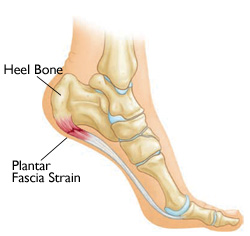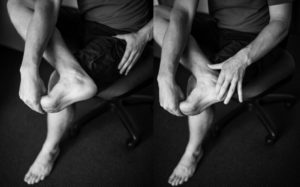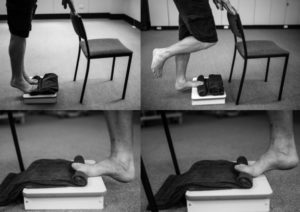Plantar Fascia Pain
If you have ever experienced a plantar fascia injury, you will know how debilitating it can be. Taking those first few steps in the morning can feel like walking on broken glass, which soon leads to frustration!
What is it?
 The plantar fascia is a thick band of tissue which runs under the sole of the foot, from the base of the heel toward the toes. It helps to support the arch of the foot, and is made of collagen fibres (like a tendon). Because it is at the bottom of our body, it takes a significant amount of strain! Micro tears may develop in the plantar fascia, and the inflamed tissue causes a great deal of pain at the base of the heel, or under the arch of the foot.
The plantar fascia is a thick band of tissue which runs under the sole of the foot, from the base of the heel toward the toes. It helps to support the arch of the foot, and is made of collagen fibres (like a tendon). Because it is at the bottom of our body, it takes a significant amount of strain! Micro tears may develop in the plantar fascia, and the inflamed tissue causes a great deal of pain at the base of the heel, or under the arch of the foot.
Symptoms of plantar fasciopathy include pain first thing in the morning, or when getting up to walk after prolonged sitting. Usually the pain improves as you move around. Most plantar pain will improve by itself, however some people have ongoing pain for up to a year.
Plantar fasciopathies may account for up to 8% of running-related injuries, and 3.6% to 7% of us may experience them at some point in our lives.
Risk Factors
An increased BMI is a risk factor for plantar fasciopathy – obesity is associated with up to 70% of cases. Runners and people who spend a lot of time on their feet are also at risk. Loss of big toe extension is an associated factor, as well as reduced Achilles/calf flexibility, and a pronating (flat) foot position.
Clinically, people report improvements in pain and flexibility with hands-on treatment, including massage, foot and toe mobilisations and dry needling.
What can we do about it?
A recent trial of 48 people with ultrasound-diagnosed plantar fasciitis, found that high load strength training combined with stretching of the plantar fascia was much more effective than plantar fascia stretching alone. The exercises from the study can be found below.
You should perform these exercises for 3 months (even if your pain goes away).
Stretching of plantar fascia:
With one leg crossed over the other, flex the ankle and draw the toes back to create a stretch of the sole of the foot
Hold the stretch for 10 secs
Perform this stretch 3x/day – for 10 repetitions
High load strength training of plantar fascia:
Perform single leg calf raises with a towel under your toes, to increase the loading on the plantar fascia.
Take 3 seconds to go up on one leg, pause for 2 seconds, then lower over 3 seconds
3 sets of 12 repetitions for both legs
The slowness of the exercise is important as it will ensure that you do not flare up your symptoms.
We can help!
There may be a number of factors contributing to your plantar fascia pain, and the physiotherapists at Central Lakes Physiotherapy and Pilates are expertly trained to ensure a correct diagnosis and treatment. Treatment will likely involve a mixture of strengthening, stretching, and hands on treatment such as taping, myofascial release, massage, foot and toe mobilisations and dry needling. If you are experiencing sole or heel pain, we would be happy to assess you and help you get (literally) back on your feet!
Give us a call on (03) 4431711, or click here to make an appointment with one of our physios today.
By Anna Jaine


